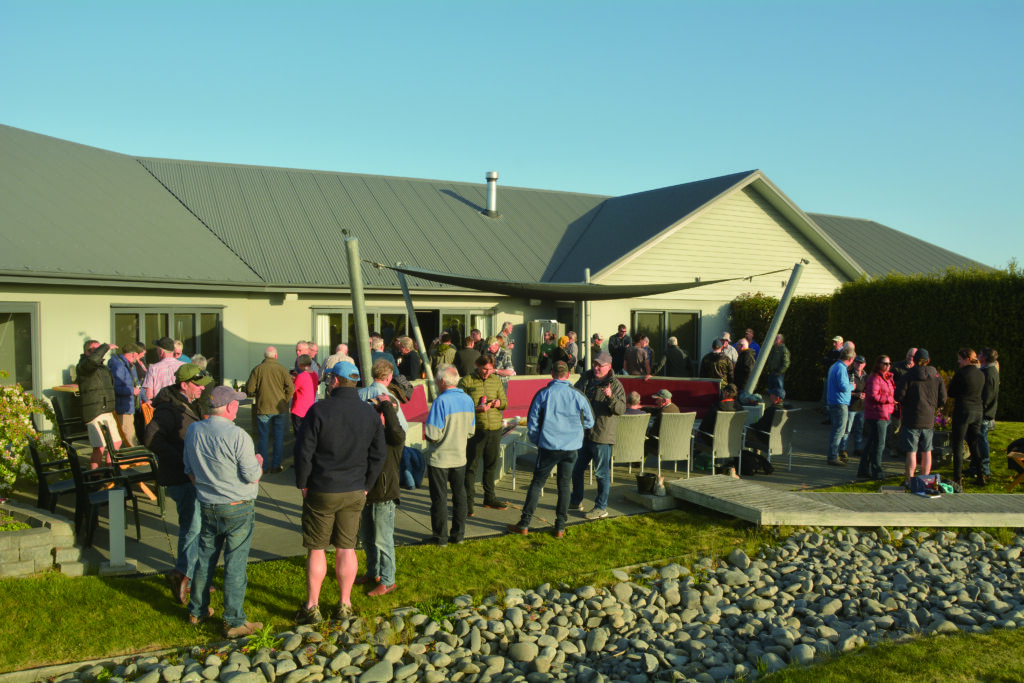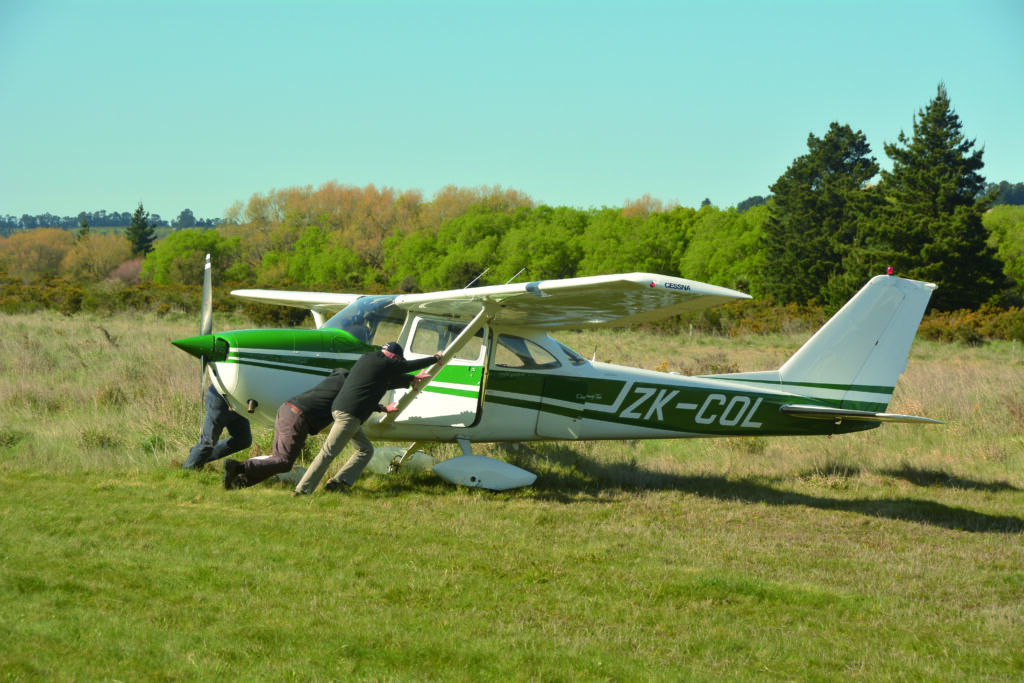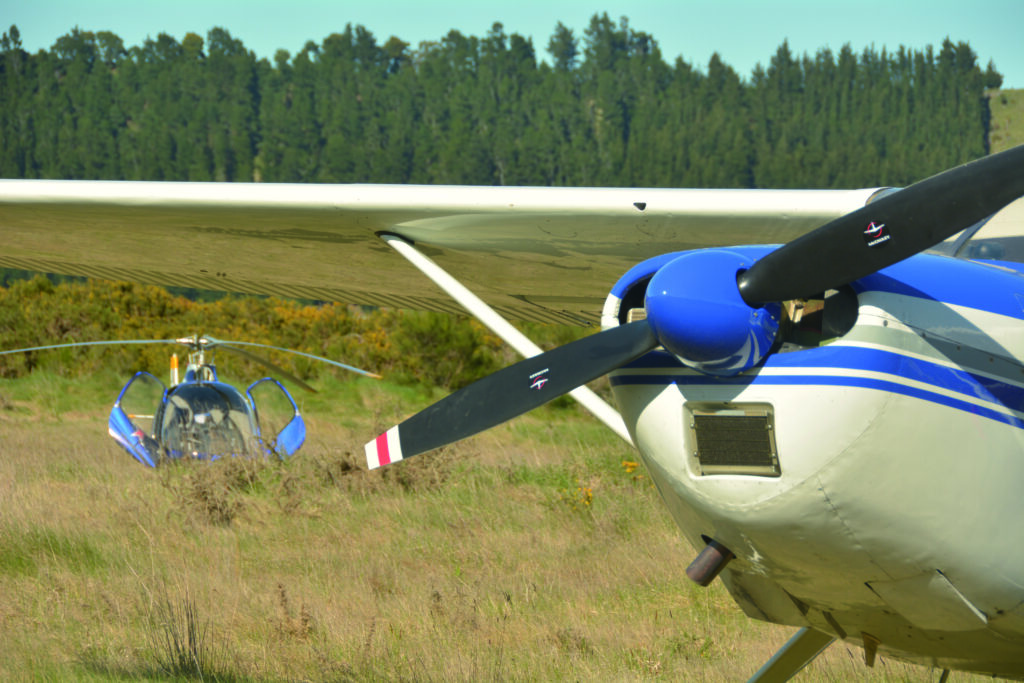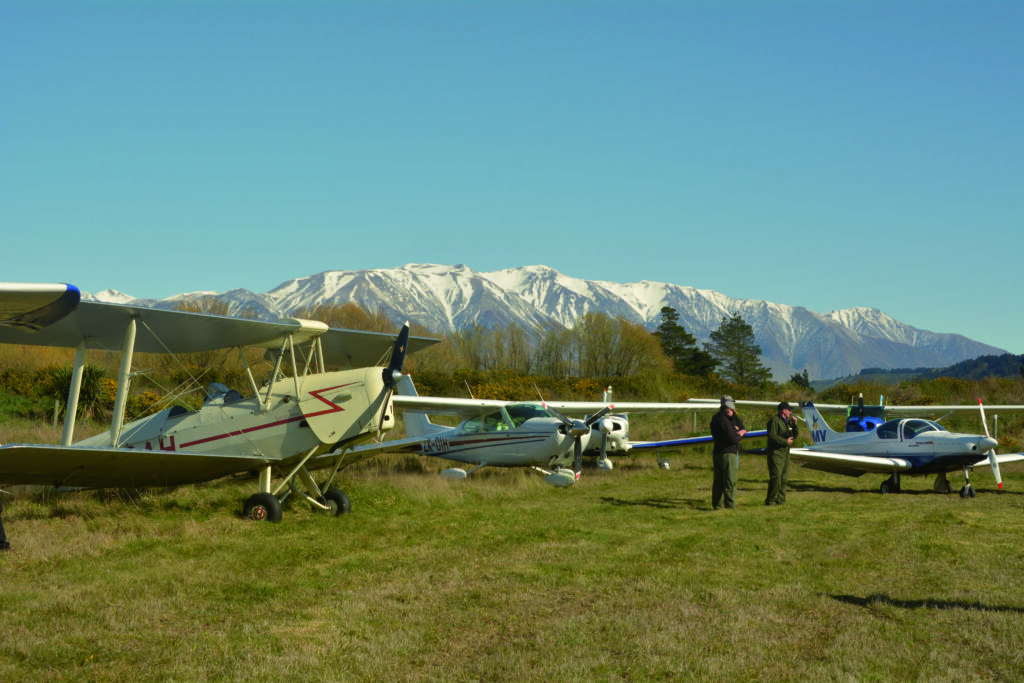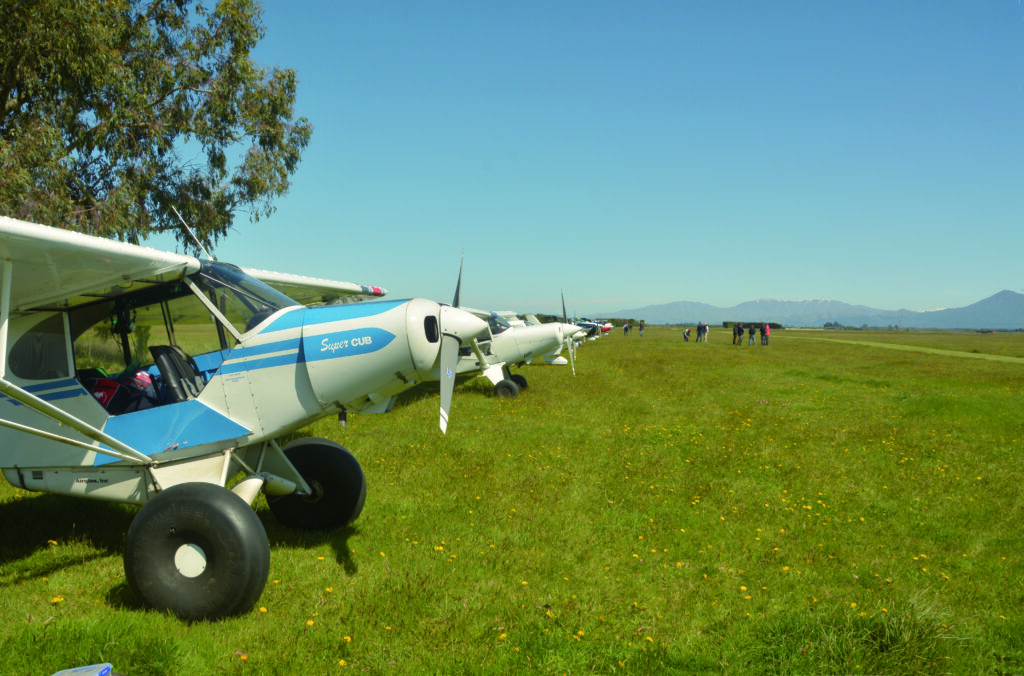By Bryan Bedwell
I’d often mulled over plans to attend AOPA fly-ins, but weather or work commitments as a Boeing 747 pilot based in Hong Kong always seemed to intervene. Finally, after a pandemic-induced early retirement, an opportunity arose: with my fellow flyers, Phil Crawford and Michael Train, I began finalising plans for Darfield 2022.
The long-range forecast was checked: excellent weather expected. Work commitments were considered: time off was doable. Accommodation was organised: sleeping bag packed just in case.
Phil had recently acquired a Cessna 182Q, ZK-JSB, which had languished in a hangar in Hamilton for fifteen years. A forty-plus year old aircraft with only 2500hrs total time, the previous owners had resurrected her then decided to sell. Phil, who had a Cessna 172 and had recently completed his PPL, decided he needed something a bit faster to travel around New Zealand and possibly take touring in Australia. Since purchasing JSB he’s given her a new paint job, while replacement of the very dated interior is scheduled to be his next project.
Two other locals, Brad Raven and his brother Dean, were interested in joining us in the beautifully polished Cessna 170B ZK-JCG. Due to the speed difference between the two aircraft, plans were made to meet up in Darfield.
Friday 7 October dawned clear, with light winds forecast for most of central New Zealand. Phil and Mike departed from Phil’s Waverley strip for the short flight to Wanganui to top up the tanks and pick me up, then we set off midafternoon, heading for our first stop in Rangiora.
Rather than the usual coastal flight route, we decided to make the most of the great weather and track from Kapiti Island to The Brothers Islands, then across the Marlborough Sounds and west along the Wairau Valley. Turning south before St Arnaud, we followed the St Arnaud–Hanmer Springs Road. The scenery in this north-eastern corner of the South Island is rugged and awe-inspiring. Shortly after passing through Hell’s Gate the terrain opens up, revealing the swampy area known as Lake Sedgemere
in the northwest corner of Molesworth Station. Crossing over Island Saddle (the highest point on the road being nearly 4500ft), we passed Lake Tennyson off to the right then headed south towards the Hanmer Range.
Beyond Hanmer Springs the scenery opens to North Canterbury farmland. From the back seat, Michael, with flight radar in hand, noticed Rebel MSR out to the east, heading toward the same destination.
After a quick stop in Rangiora for fuel, we continued to Darfield, where Charlie was on hand to run us to our accommodation in town. Soon a bus delivered us to John and Trish Crawford’s place for a BBQ and planning session for the following day’s activities. We opted to head south – it was a good chance for Phil to gain experience in the Cessna 182 while, for me, it was an opportunity to sharpen up my skills on short strips.
Saturday morning was clear and calm. After catching the early transport, there was plenty of time to preflight and warm up JSB before the 0900 briefing.
First strip of the day was Intake on the banks of the Rakaia River. This is a narrow strip with limited parking at the western end, which just managed to accommodate us all. To depart, it required a coordinated pattern of four or five aircraft back-tracking in a group, turning around in order, so the last aircraft to taxi became the lead aircraft to depart.
The next strip, further up the Rakaia Gorge at Bruce Nell’s property, was unfortunately a no-go for us less-experienced strip flyers due to a strong and gusty nor-wester. Brad, used to howling Taranaki winds, landed, so Bruce did receive one visitor at least. The rest of us diverted back to Ashburton to re-group and decide the new plan of attack.
The pesky nor-wester put the strips in the foothills of the Southern Alps out of reach, so the new plan became lunch at Les Vincent’s place, where there was plenty of space to park up and brilliant sunshine made it an enjoyable stopover. After that came Anama, where a strip had been marked out in the middle of the lucerne, complete with edge and centreline markings. From there, the group split, with some heading to Thornycroft enroute Mesopotamia while the rest flew there direct. The backup plan was to regroup at Arundel if we were unable to land and, with the wind showing no sign of abating, this was what happened.
The Arundel strip proved to have the most challenging approach of the day, with most aircraft coming in over the trees with a steep final descent. We chose an angled approach along the river flats with a late turn to line up on the strip. The short break at Arundel gave us the chance to talk with the crews of two Tiger Moths who were on their own southern tour.
From Arundel, the next leg was a thirty minute flight to visit Lou McAlister at Cust, where we were treated to a hot drink and home baking and given the opportunity to wander around Lou’s extensive tractor, truck and car collection. All too soon, it was time to head back to Darfield and enjoy another great night at the Kirwee Rugby Club.
For some, it was a rather slow start the next morning. After hitching a ride to the strip with some obliging folk from Nelson, it was time for us to head north and enjoy a reviving coffee in Kaikoura before the final leg home.
The trip south had been an extremely enjoyable experience, offering excellent insights into the unique wind patterns of the Canterbury Plains, which saw calm conditions on some strips and blustery nor-westers just five or ten miles away. The experience left all three of us in JSB hankering for more. Thanks to the organisers of Darfield 2022 for making our first fly-in so memorable.
This article first appeared in the Summer 2022 edition of Approach Magazine, the dedicated magazine of AOPA NZ, which is published quarterly.


